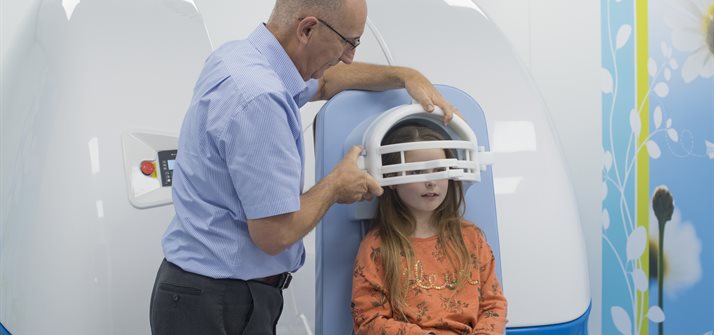
Working with the world-leading Sir Peter Mansfield Imaging Centre, the CBTRC applies translational research imaging techniques. This helps us understand how tumours grow and the impact of treatments using non-invasive methods. The CBTRC was one of five national imaging centres awarded a CRUK programme grant between 2008 and 2015. This helped us to evaluate the potential of imaging for diagnosis and tumour detection, for tumour characterisation, and for predicting prognosis and treatment response.
More recently, our Imaging theme has progressed with projects directly benefitting patients, thanks to the generosity of CBTRC supporters. This includes the Mock Scanner, helping children to alleviate scanner anxiety, and a major joint fundraising programme to install a £2.9m state-of-the art scanner into the operating theatres in Queen's Medical Centre.
Working with Consultant Radiologist, Professor Rob Dineen, this research theme is also exploring new ground linked to our ependymoma research. There are different types of ependymoma (based on the genes and chemicals they contain), and the chances of survival for the child are in part determined by the type of ependymoma.
Currently, we can only tell which type they have after surgery to remove the tumour. However, our "radiogenomic" research (which combines imaging data with information about genes, chemicals and uses computer programmes to predict tumour types), will show whethre we can identify the tumour type before surgery. This would mean doctors could start planning treatments sooner, discuss the risks in more detail with the family, and – in future – use the information to guide trials of new cancer treatments. Importantly, this could predict the behaviour of the tumour in terms of whether it is likely to come back again after treatment. This project was set up using donations from CBTRC supporters, and is now generously funded by the Children's Cancer and Leukeamia Group.